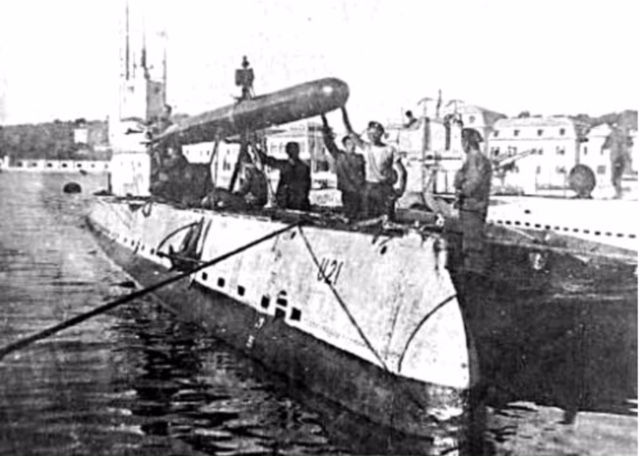We are not only going to see lots of tourists during our trip. There are also plenty of shipyards we are going to sail past - Bay of Kotor, Split, Zadar, Rijeka, Pula, Trieste. Why are they there? Venice built all its ships in the Arsenale and Croatia is not known as seafaring nation. As ever so often, history offers a clue.

The Austrian-Hungarian battle fleet in Pula, Istria, in 1914
After Napoleon was defeated in 1814, a new order for Europe was designed by the Great Powers (Russia, Austria, Prussia and the United Kingdom). The Poles were granted their own Kingdom (albeit in personal union with Russia) and Belgium and Luxembourg were given to the new United Netherlands. The Austrian Empire had to cede considerable territories to the two new states. In compensation, as one of the victorious nations, it got all of Venice, Dalmatia, Milan and Tuscany. Suddenly, the Austrian Empire which was for centuries a land locked power had a long coast to defend - from the Po river to the Bay of Kotor.

Austrian territorial gains after the Congress of Vienna 1814/1815
Thus the decision was taken to build a Kaiserliche und Königliche Kriegsmarine (Imperial and Royal Navy). The fleet had to be built somewhere. Technology and steel could be imported from Germany. The Germans had a keen interest for Austria having technology and resources to develop their own fleet. They could counter the Royal Navy with bases in Malta and Alexandria, Egypt. But where would these modern battle ships be built? In the well protected harbours of Dalmatia of course.

The Imperial and Royal Navy of Austria-Hungary in 1913 on a training excercise - the six modern Dreadnoughts leading the fleet
Whilst a proper fleet building program did not start before 1860, the Kaiserliche und Königliche Kriegsmarine of Austria and Hungary grew to a cinsiderable size by 1914 and was taken serious by the Royal Navy. Next to its six modern Dreadnaughts it had a few outdated battleships and cruisers but 27 modern destroyers, 79 modern torpedo boats and seven small but lethal submarines

U-21 One of the KuK Navy’s feard submarines
There was not much action in the Adriatic Sea in WW1. Austria wanted to preserve its main battle fleet for the decisive moment which never came. Thus, they declined to use the fleet to cut off the British-French supply lines Gallipoli in 1916 - would have been a smart strategic move. The Royal Navy had not strategic reserve.
The torpedo boats and submarines of both sides were having their work cut out however. The Italian torpedo boats managed to sink an Austrian battleship in 1918 which shelled Otranto and the Austrian submarines confined the Italian merchant navy and many British destroyers to the ports blocking any effort to support the Serbian front line from the sea. Supplies had to be moved the hard way from Athens through the mountains.

Strait of Ottranto being mined by the British and Italian Royal Navy in 1916
When the armistic was signed in November 1918, the remains of the KuK Navy were split between the Kingdom of Italy and the newly created Kingdom of Yugoslavia (forged together from Croatia, Dalmatia, Serbia, Montenegro and Slovenia). But it was too big and too expensive for the new country and scuttled. Yugoslavia only retained the knowhow of building small submarines - something Josip Tito liked when he came to power in 1945 (see previous blog). The large ship yards of the KuK Navy were all converted to commercial use and managed to carve out a market niche thanks to cheap labor and advanced (German) technology. With the same recipe they still survive today - albeit most technology is from Asia now

Pula today - with the commercial shipyard at the center




Comments